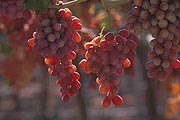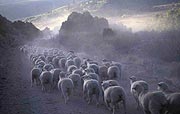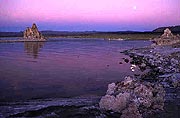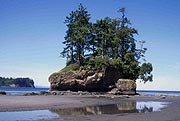 The time to travel has finally arrived, and you’re planning your trip. Where do you go to find good information? More perplexing still, how do you go about planning a trip to a place you’ve never visited with confidence that you’ll have terrific photo locations when you get there? These can be tough problems. Doing your “homework” before you set out can be difficult, but it’s worth the time and trouble. The following tips make excellent self-assignments:
The time to travel has finally arrived, and you’re planning your trip. Where do you go to find good information? More perplexing still, how do you go about planning a trip to a place you’ve never visited with confidence that you’ll have terrific photo locations when you get there? These can be tough problems. Doing your “homework” before you set out can be difficult, but it’s worth the time and trouble. The following tips make excellent self-assignments:
Tip 1: Visit your local bookstore. Examine pictures in published books on the area you intend to visit. As you’re looking, take notes about the locations that you think are interesting. Include any clues you can find in the literature, caption, or photograph–such as the general area, park, or road where the photo was shot.
 Tip 2: Visit your local library. Ask for information on the general location and have the staff help you explore current magazine articles or publications. (Publications that date back more than five years won’t be as helpful as more recent issues.)
Tip 2: Visit your local library. Ask for information on the general location and have the staff help you explore current magazine articles or publications. (Publications that date back more than five years won’t be as helpful as more recent issues.)
Tip 3: Obtain some really good maps and use a highlighter to mark the locations you singled out during your research. Don’t forget the materials available through your auto club, national and state park services, tourist bureaus, and map companies. These are all good sources for up-to-date information and maps.
 Tip 4: Write to tourist bureaus, as well as park, preserve, and government organizations for information. When you write, be sure to indicate the time of year you intend to visit and your interests. Quite frequently, I’ve contacted someone in the office who really goes out of his/her way to help. Ask the questions, “What are your favorite locations?” or “Where would you take me if I were a friend visiting your home for the first time?” You might be surprised at the great places local officials will share.
Tip 4: Write to tourist bureaus, as well as park, preserve, and government organizations for information. When you write, be sure to indicate the time of year you intend to visit and your interests. Quite frequently, I’ve contacted someone in the office who really goes out of his/her way to help. Ask the questions, “What are your favorite locations?” or “Where would you take me if I were a friend visiting your home for the first time?” You might be surprised at the great places local officials will share.
Tip 5: Subscribe to photography travel information bulletins such Photograph America (see advertisement in Apogee) or PhotoTraveler publications. These are wonderful guides written by and for photographers. I used Photograph America‘s special travel guide on the Pacific Northwest and discovered many wonderful places to photograph in and around Pullman, Washington. This is an area of magnificent rolling hills. The graphics of the contour farmlands are terrific. I wouldn’t have missed these locations for the world. I knew the right times, the right locations, and the best way to get there–thanks to this publication.
 Tip 6: Surf the Internet. Try several search engines to expand your searches. Make a list of all of the key words that help you find information. Try looking for other photographers by going through some of the photography organizations such as PSA. Also, look for photography magazines that are published in the location that interests you. A great magazine I discovered in Australia was Better Photography. You can go through their archives for older articles that might be of interest on your trip.
Tip 6: Surf the Internet. Try several search engines to expand your searches. Make a list of all of the key words that help you find information. Try looking for other photographers by going through some of the photography organizations such as PSA. Also, look for photography magazines that are published in the location that interests you. A great magazine I discovered in Australia was Better Photography. You can go through their archives for older articles that might be of interest on your trip.
Tip 7: Check the Internet for information about festivals, special celebrations, or holidays. For example, Los Angeles boasts the largest lotus pond outside of Japan–the location of a wonderful festival during July. In the Seattle area, the tulips bloom in March, and you don’t want to miss the opportunity to see thousands of beautifully colored tulips in a field. Sometimes, adjusting the time of your trip by just a few days will enrich both your travel and photographic experiences. Check <digitalcity.com> for entertainment, festivals, and fairs in specific American cities. Also, <google.com> offers interesting sites when you type in “fairs and festivals.”
Tip 8: When you arrive at your destination, find a bookstore, drug store, or card shop, or browse the postcard racks at the airport to see the locations they feature. Take the time to mark each promising location on your map. If any are near the spots you’ll be visiting, you can gather more specific directions from local sources. (I’m usually so excited about arriving, I forget to check this resource before I start my trip, and I’m always sorry about the opportunities I’ve missed when I look as I’m leaving.)
 Tip 9: Talk to people. A smile and a ready map will help the people at your motel, gas station, or local restaurant point you in the right direction to capture some great shots. I was traveling near Mt. Rainier in Washington when the host at the local restaurant saw me looking at my map during dinner. He came over and suggested I take a more scenic road and to be sure to look for the great “sculpture garden” on that road. He was right. The garden of artwork created from discarded machine parts and lots of imagination was a great place to stop and photograph.
Tip 9: Talk to people. A smile and a ready map will help the people at your motel, gas station, or local restaurant point you in the right direction to capture some great shots. I was traveling near Mt. Rainier in Washington when the host at the local restaurant saw me looking at my map during dinner. He came over and suggested I take a more scenic road and to be sure to look for the great “sculpture garden” on that road. He was right. The garden of artwork created from discarded machine parts and lots of imagination was a great place to stop and photograph.
Tip 10: Be open to ideas and new experiences, and–most importantly of all–be flexible. I’ve found that the biggest handicap to my finding great locations is my attitude. “I’m too tired to look over the map tonight. I’ll do it tomorrow.” “Oh, I’m sure there’ll be a bigger, better waterfall around the next bend. I’ll stop at that one.” “I don’t want to ask directions, so I’ll just wander around until I get tired of looking.” Sound familiar? I’ve used every excuse at one time or another. You don’t come home with great shots when you travel with a lazy attitude.
Doing your homework ahead of time saves lots of wear and tear while you’re on your trip. It’s the economical way to find the best locations. Being rested, knowing where you’re going, and having some idea of what you’ll find when you get there will help you bring back those terrific photos we all want.
by Noella Ballenger

Leave a Reply